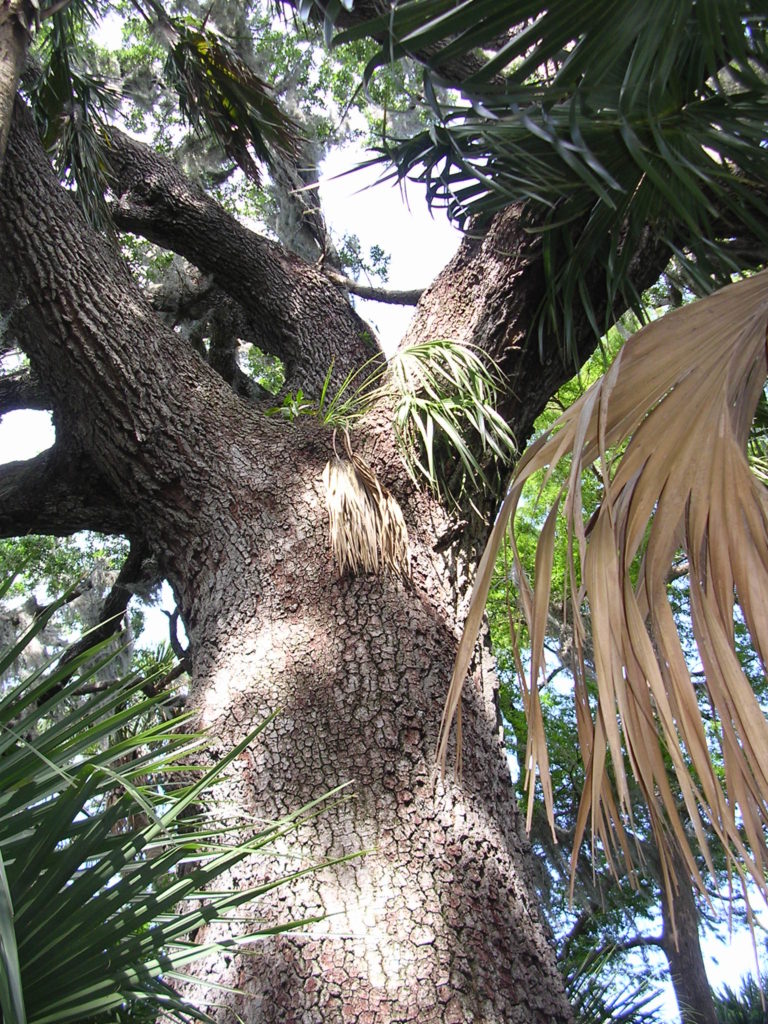
Live Oak
Quercus virginiana
Live oak, or Virginia Live Oak is native from the upper Florida Keys through the Southeastern United States and Texas. It is one of the most beautiful and long lived trees of Florida. Several hundred years is not uncommon. The flowers are wind pollinated in the spring and the leaves fall all at once in March making cleanup a one time event.
The growth is moderate to fast, depending on soil and moisture with a height of 30 to 60 or more feet and a spreading crown when not competing with other tall trees. Once the corky bark and spreading habit are recognized, it becomes easy to tell this oak from the similar Laurel Oak. Laurel Oak has a dominant central leader and smoother bark.
Live oak will grow from dry uplands to moist soil with occasional flooding, such as along the edge of cypress swamps. It is found inland, often mixed with other tall trees like Slash Pine, Laurel Oak and Sabal Palm. Along the coast it mixes with many trees and shrubs including Mastic, Red Bay, Paradise Tree, Pigeon Plum, Satin Leaf and Red Mulberry. Live Oak can tolerate some salt air and short term saltwater flooding.
The understory of a Live Oak includes Wild Coffee, Beautyberry, Saw Palmetto, Snowberry, Marlberry, Basket Grass, Coastal Foxtail, Spiderwort, Swamp Fern, Coralbean, Wild Plumbago, Coontie and White Stopper.
The larva of the Horace’s Duskywing, the White M and the Red Banded Hairstreak and possibly other butterflies feed on the leaves. The acorns are a major food source for wildlife and once were for Native American Indians. The branches provide hiding spaces and nest sites for various birds and animals.
Orchids and bromeliads attach to the bark and many insects feed on the leaves. These become food for migrating warblers and other birds. Just sit under a live oak with your binoculars in the morning during the winter months and especially the fall and spring migrations and you will see various warblers, vireos and other small birds moving through the branches as they feed.